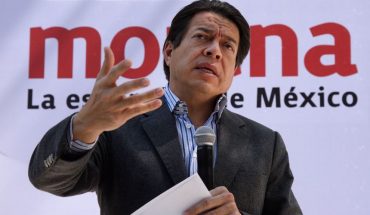Anastasio Olivares had eight hectares planted in Calakmul, Campeche. Each agricultural cycle sold the government up to eight tons of corn and took out between 10 and 12 tons of nugget and two or three of rice. Agriculture was his way of life and so it was until 1995.
But Anastasio, like many smallholder farmers, could not stand the fall in crop prices—from two pesos to fifty cents to 60 cents per kilo—when cheaper grains imported from the United States began to arrive, with the entry into force of the North American Free Trade Agreement.
From that moment on and in the following years, government support did not come to small producers, if they had access to Procampo, later known as Proagro. Anastasio, for example, had a transfer of one thousand 500 pesos from that program every year that only reached self-consumption planting.
Read: Agriculture promises to issue operating rules for new field aid programs
“They left us alone and we just had to find another way of life, many left their land, their home and went to the United States or the Riviera Maya to work as waiters in hotels, I got into beekeeping,” he says.
Víctor Suárez, Undersecretary of Food Self-Reliance of the Ministry of Agriculture and Rural Development (Sader) endorses that the government of Andrés Manuel López Obrador will focus on supporting small producers, especially in the south and southeast of the country. He says they will prioritize production for the domestic market, with the goal of being self-sufficient in corn, beans, wheat, rice.
All the cultivation of those grains is going to reactivate, he promises. “We will provide support for liquidity, technical assistance and warranty prices. Small producers are now going to be certain in marketing their crops.”
And how will you support the field?
López Obrador’s government has launched its strategy to boost the field by eliminating programs that used to focus on medium and large producers; and handing out million-dollar resources to others who favor the little ones.
For example, Livestock Credit to the Word, which provides supports to acquire livestock and infrastructure, is allocated one billion pesos for the next year. Fertilizers, which provides in-kind support, has a budget of 1.310 million pesos.
Find out: Small producers, the government’s priority in the new strategy to support the field
The most important by the amount allocated and for the impetus that the federal administration wants to give them are two: Production for Welfare, which has 11 billion pesos to deliver money transfers, before cultivation, in the planting of basic grains. And the Commodity Guarantee Prices, which is 10 billion pesos long and seeks to acquire, at preferential prices, the crops of small producers of maize, beans, rice, wheat and milk.
Victor Suarez says that these supports will boost the productivity of small producers and thus also grow local economies.
“Agrochemicals, which harm the environment and people, were prioritised before, and they raise costs. Now we’re going to produce more, but fairly, healthily and sustainablely.”
However, there are several aspects of Sader’s new strategy that concern.
“The main programs of the federal government are going to be based on standards generated from the so-called Census of Welfare, of which there is many doubts, because it is not known how it is being structured, there is a lot of opacity in that,” says Juliana Martínez Nacarato, researcher in the area of Fiscal Justice, Fundar.
What also raises doubt is the design of the programs, since they do not seem to have a well-defined target population or the best schemes to impact production.
You may be interested: The Ministry of Agriculture has ‘paused’ support for ranchers
One of Sader’s most important programs now, says Antonio Yunes Naude, research professor at the Center for Economic Studies (CCE) of El Colegio de México, is Production for Welfare, “but this one is essentially very similar to Procampo, in the sense that they are monetary transfers not conditioned to the increase in production, which is already known to have not worked”.
The difference, the researcher adds, is that the commitment is to get the transfer to the producers before the crops, and that now the support is limited to having no more than 20 hectares, “but the rest is the same”.
In addition, the specialists agree, serving the small producers, which are many and very diverse, is a great challenge and Sader has not said exactly how it will manage to increase production for the domestic market.
“We’re going to coordinate the programs well. There will be austerity in the management of the budget, zero corruption, zero intermediaries for the support to reach the one who has to reach, and for the sake of everyone, first the poor,” says Sader’s undersecretary, but does not require action.
On the targets they can compromise, he says, “we are aspiration that the sector grows, at the end of administration, by an average 3 to 4% per year in agricultural GDP and an increase in maize production to meet 80 or 85% of national demand; Bean, 100%; wheat and rice, 65%; food self-sufficiency and reduce the import of pork to 50%”.
On whether this administration will measure the impact of direct subsidies on field productivity—beyond the performance, design, goals, and transparency assessments of the National Regulatory Improvement Commission (Conamer) and Coneval—says yes, but that it doesn’t know when.
The chairman of the Committee on Rural Development, Agriculture and Food Self-Sufficiency of the Chamber of Deputies, the brunette Eraclio Rodríguez, says that it would be appropriate to generate a program where subsidies are combined with credit and also technical assistance, “because with 5 thousand pesos per month nothing else will not get people out of poverty and no productivity will be raised”.
Read: Agriculture eliminates programs with which resources were diverted but creates new ones without rules of operation
Still on hold
The truth is that several small producers have not yet reached support. Anastasio says that he, on the part of the Sader, is receiving nothing. The beekeeper says he wants to plant again, but needs at least 35 thousand pesos to clean and prepare the eight hectares he grew and that have already become a mountain.
For now, all they’ve promised is to enter the Sowing Life program of the Ministry of Welfare. “But that’s what support is going to be to reactivate only 2.5 hectares. I’ve already been told that I’m already on the beneficiary squad and that I’m going to get the support. I’ve already met with the technicians to see how we’re going to work.”
However, Anastasio says that several of its neighbors are already getting the support of Production for Welfare and that crops in the area are already reactivating, as is the economy.
But not all regions of the country have advanced the same way. In Acatepec, on the mountain of Guerrero, Production for Welfare does not arrive yet and the entity was not among those that were selected to start the first phase of Sembrando Vida during this year.
Guerrero was chosen rather to be the pilot of the fertilizer program, but Angel Aguilar, peasant from that area, says that not even that came complete. “They told us that they were also going to give us the seed to sow and it did not come. Here in Acatepec at least 30% of those who were supposed to be beneficiaries must have been left without fertilizer, who already had the vouchers to exchange for the product and everything.”
What we do in Animal Político requires professional journalists, teamwork, dialogue with readers and something very important: independence. You can help us keep going. Be part of the team.
Subscribe to Animal Politician, receive benefits and support free journalism.#YoSoyAnimal
translated from Spanish: Government promises to support the field, but there are doubts about how it will do so
December 6, 2019 |





